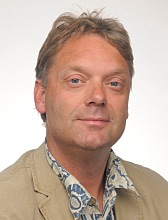Summary and Curriculum Vitae
Lecture
SAR and Moving Target Recognition
The purpose of this lecture is to introduce the participants to aspects of synthetic aperture radar (SAR) in conjunction with moving target indication (MTI).
Synthetic aperture radar provides high-resolution images of the non-moving ground scene, but fails to indicate and position moving objects. A short review of the motion- induced effects occurring in SAR images will open this lecture. Like in special airborne MTI systems, the solution to the SAR MTI problem is to use an array of antennas or subapertures and several receiving channels to cancel the interfering clutter. Popular methods for the recognition of motion are ATI (Along Track Interferometry) and DPCA (Displaced phased centre Antenna) applied to a pair of phase centres. ATI yields image-like interferograms with high information content but fails for instance for the azimuth re-positioning of moving target signals interfered by clutter. In contrast, DPCA commonly permits sufficient clutter suppression but also prevents an accurate repositioning of the moving object in the SAR image. An efficient generalization of DPCA is adaptive space-time processing (STAP), which can be simplified to frequency- dependent spatial processing in the Doppler domain.
The ATI, DPCA and STAP techniques applied to SAR will be reviewed in this lecture, theoretically analysed and their performance will be illustrated with data gathered by experimental airborne and space based SAR systems, such as PAMIR and RADARSAT-2.
The learning modules are in detail:
- Stationary world SAR
- Principle Processing
- SAR & Moving Targets (single channel)
- Geometry
- Characteristic
- SAR & Moving Targets (multi channel)
- Different approaches
- Channel balancing
- Space-based SAR/GMTI
- Comparision airborne/space-borne
- DPCA
- Examples
About the Lectuerer

| Personal information | |
| First name, Surname: | Christoph Gierull |
| Title: | Apl. Prof. Dr.-Ing. |
| Organisation: | Defence Research and Development Canada (DRDC) Ottawa |
Christoph H. Gierull received the Dipl.-Ing. and Dr.-Ing. degrees in electrical engineering from the Ruhr-University Bochum, Germany, in 1990 and 1995, respectively. From 1991 to 1994, he was a Scientist with the Research Establishment for Applied Science (FGAN), Wachtberg, Germany.
In 1994 he joined the German Aerospace Centre (DLR), where he headed the SAR simulation group at the Microwaves and Radar Institute until 1999. Since 2000, he is a Senior Defence Scientist with the Radar Systems Section, Defence R&D Canada Ottawa, Canada. During the Space-Shuttle Radar Topography Mission (SRTM) in February 2000, he was responsible for the X-SAR performance at the Johnson Space Centre, Houston, USA. From 2006 to 2009, he was a Guest Scientist at the Fraunhofer Institute for High-Frequency Techniques and Radar (FHR) collaborating on performance enhancement of GMTI modes on PAMIR and RADARSAT-2. In 2011 he assumed the duties of Group Leader Space-Based Radar at DRDC Ottawa, and the same year the University Laval, Quebec City, Canada, appointed him as Adjunct Professor. He has been an international expert advisor to the Canadian Space Agency as well as to the European Space Agency on several of their future space based radar missions including RADARSAT Constellation and Sentinel-1.
Dr. Gierull received the ITG Paper Prize Award of the Association of German Electrical Engineers (VDE) in 1998 and the Best Paper Awards (co-author) at the Int. Radar Conf. 2004 and again at the 6th EUSAR Conference 2006. He is author and co-author of numerous peer-reviewed journal publications. Further, he authored the chapter on GMTI for RADARASAT-2 in Application of Space-Time Adaptive Processing, published in 2004. He was member of the scientific program committees of 13 international conferences and served as an Associate Editor for a Special Issue in EURASIP's Signal Processing in 2004 and a Special Issue in IEEE Trans. Geoscience and Remote Sensing in 2011. He is senior member of IEEE, and member of the German VDE/ITG.
